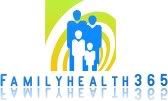Overworked and sleep deprived, doctors are making more medical mistakes than ever before. Who's most at risk? Young women—because they're assumed healthy and they're less likely to question a diagnosis. Here's how to be your own health advocate so you can help your M.D. help you. Your life could depend on it.
So, a woman walks into a doctor's office. She's 25, and her cramps are out of control; her period is irregular at best. What's more, she's packed on 50 pounds in 18 months. Her general practitioner suspects and tests her thyroid. Normal. She's shuffled to a gynecologist, who orders a raft of blood work. Normal again. She's prescribed Advil for the pain and birth-control pills to regulate her cycle. Back home, she takes to the Web, searching for answers. And at a followup visit with her gyno, she timidly offers a diagnosis of her own: polycystic ovary syndrome (PCOS), a hormonal disorder that plagues some 5 million young women. "Doubtful," says her doc. "You don't fit the profile." Though the classic PCOS patient is overweight, sufferers also have unnaturally high testosterone levels, something that's missing here. Besides, before her recent weight gain, she'd been slim and healthy, so she's likely just going through a normal postadolescent metabolic slowdown, says her M.D. She'll bounce back soon enough. Except that she doesn't—and two years later, after constant pain and countless more appointments, procedures, and tests, Alexa Stevenson of St. Paul, Minnesota, is finally correctly diagnosed by a reproductive endocrinologist with PCOS, the most common cause of infertility. What, were you expecting a punch line? Alexa's experience is no joke—in fact, it's alarmingly common. Tens of thousands of patients are misdiagnosed every year, according to the Institute of Medicine. In fact, medical mistakes are the eighth leading cause of death—higher than car accidents or even breast cancer. Alexa's diagnosis was fumbled because her birthcontrol pills lowered her testosterone level—something her gynecologist arguably should have deduced since she's the doctor who prescribed them in the first place, before checking her hormone levels. But Alexa is just one of the roughly 49 million Americans (many of them young women) who walk into their doctor's office with a problem and leave with a solution to something else. Behind the Mistakes
For many women, "the good old days of putting yourself in the capable hands of a doctor who knows you are over," says Peter J. Weiss, M.D., author of
More Health, Less Care: How to Take Charge of Your Medical Care and Write Your Own Personal Prescription for Lifelong Health. Today's inundated clinics and vexing HMOs mean physicians are swamped—not to mention drowning in paperwork—and are more likely to pass patients around, especially in big private practices. Not seeing the same practitioner each time you visit raises your risk for a misdiagnosis; without background knowledge, says Weiss, it's much harder for a doc to nail what ails you. And if you happen to be a female in your twenties or thirties, your chance jumps even higher.
It sounds strange, but young women's general good health can work against them. When dealing with a typically strong, fit demographic, doctors are less likely to look toward serious diagnoses. Take, for example, what happened to Emily Willingham of Austin, Texas. When she first saw a gastroenterologist for her relentless stomachaches at age 35, she was sent home with ibuprofen. Four years later, another M.D. discovered a precancerous three-inch-wide intestinal polyp. "That first G.I. doc thought I was too young and too female to have colon problems," she remembers. "But without treatment, I would have died of colon cancer." Also contributing to misdiagnoses is that lots of young women use their gyno as their primary doctor, relying on a singlesubject- trained physician to diagnose all sorts of bodily woes, says gynecologist Shari Brasner, M.D., an assistant clinical professor at the Mount Sinai School of Medicine in New York City. "If a woman wakes up with ear pain, a gyno is not the right person to see." Janet Taylor, M.D., a psychiatrist and health strategist in Manhattan, echoes that statement: "Specialists are specialists for a reason; they focus on one area of the body. Even if you have a terrific relationship with your gynecologist, you should still seek out a general practitioner." Of course, scheduling multiple appointments with multiple docs can be maddening (think: infuriating hold times). We don't have time to get sick, much less tend to our symptoms. As a result, when we finally find ourselves in an exam room, we're inclined to accept the first diagnosis that comes along so we can get out, get better, and get on with our lives. "This mind-set really causes problems," says Taylor.
Fortunately, there is a fix. What follows is crucial information on how to increase your chances of being correctly diagnosed off the bat and advice on the best ways to stay informed throughout your treatment.
Demystify Your Doc
Something about a white coat renders even brave, bossy types meek and compliant. Women often hesitate to ask questions, says Weiss, especially when we're already feeling sick and vulnerable. Plus, we're shivering in skimpy paper gowns, and we address our docs with their professional titles (Dr. So-and-So), while they call us by our first names. "All too often there is a parent-child relationship between doctors and patients, as opposed to an adult-adult interaction," explains Andrew Cook, M.D., of the Vital
Health Institute in Los Gatos, California. And young women might succumb to an extra insecurity: We want our doctors to treat us kindly and give us optimal care, so we're inclined to be obedient, says Taylor. We're also more likely to lie about our health and feel embarrassed about discussing "private" physical symptoms (hello, itchy vaginal rash!), so we often keep mum to avoid being judged.
But here's the thing: This isn't a scenario of us versus them. Women and their doctors are on the same team, so why shouldn't we be as vigilant when it comes to our health as we are at work or at home?
Before you even get into that paper gown, comparison shop. Suss out a practice in advance by reading reviews at sites like AngiesList.com. If the docs are booked till Christmas, ask to see a nurse practitioner instead—they are a good first step into a medical group, can prescribe meds, and are often more available than the physicians.
While in research mode, don't let concern about ruffling anyone's feathers keep you from your homework. "Arrogance and ego are real problems in the medical profession," but good docs welcome involved patients, says Richard Klein, M.D., author of
Surviving Your Doctors: Why the Medical System Is Dangerous to Your Health and How to Get Through It Alive.
In addition to asking lots of questions, keep close track of your medical history by filing away copies of your records and transferring them whenever you change docs. But even if you have charts dating back to childhood, don't assume your physician has digested everything. "There really isn't enough time," says Adam Dickler, M.D., a radiation oncologist in Evergreen, Illinois. If your doctor flips open your file while entering the exam room, it may be the first time she's looking at it, so be ready with a recap. A full recap. "The issue isn't always that doctors aren't looking at your info," says Taylor, "it's that patients aren't giving enough information." (Case in point: Emily Willingham didn't know to tell her first doc about her family's history of colon polyps.) "Anyone who's ever seen an episode of House knows the importance patient history plays in a diagnosis," says PCOS sufferer Alexa Stevenson. "And when it comes to how you've felt in the past, you are the only real expert."
Double-Check Your Diagnosis
There are thousands of medical diagnoses. But most doctors see only about 250 of them in the course of their career, leaving lots of room for error, says patient advocate Jason Maude, founder of Isabel Healthcare, which runs a diagnosis computer program for medical pros. Docs are taught that the obvious culprit is usually the right one— and it often is. But after diagnosing dozens of patients, it's tempting to jump to easy conclusions. Just imagine a physician has seen 10 cases of strep throat in the past 10 days. If you walk in with a sore throat, guess what's at the front of her mind?
That preliminary diagnosis is critical— and tough to shake. Once your symptoms are given a name, the label tends to stick until overwhelming evidence (or your own persistence) compels alternate theories. Cook, for example, recently saw a patient in her twenties with excruciating pelvic pain that other docs believed was a psychological result of her history of sexual abuse. In reality, he says, she was suffering from endometriosis.
Cutting-edge in-office online diagnosis aids like Isabel and UpToDate are starting to help doctors think outside their familiar 250 cases. But even with the best tools and the most open-minded physician, "diagnosis is still a question of playing the odds," says Weiss. "Even if I'm 99 percent sure you have a certain condition, there's always that 1 percent chance I'm wrong."
Tip the odds all the way by doing research before your appointment (remember, you're researching, not diagnosing) and reminding your M.D. that other possibilities could still exist. When you walk in with that sore throat, remember to ask, "So you think I have strep, but what else could it be?"
Most important, don't think twice about getting a second opinion. Many Americans shy away from having their diagnoses double-checked; that's especially bad news for women, since female-specific illnesses like ovarian cancer are frequently misdiagnosed. A smart doctor should never feel offended or threatened by a backup opinion, particularly if it's from a specialist, says Dickler. "Many women have a fear of insulting their doctors," he says, "but getting a second opinion is a patient's right."
Still feeling bashful? Start thinking of your health as your most important investment. "We spend so much money on health care that we're entitled to get the correct diagnosis," says Taylor. "You owe it to yourself to get a second opinion."
Be an Empowered Patient
Once the diagnostic process is over, you may be tempted to just sit back and swallow your meds. But one-size-fits-all solutions don't always apply in medicine. Every young woman reacts differently to her treatment, so make sure you get the lowdown on possible side effects and continue to monitor your body closely. If prescription pills aren't helping, ask for a list of alternatives. "Many traditions are related to health and healing," says Weiss. "But doctors come from just one tradition—medical school— so they might automatically prescribe drugs instead of, say, massage or acupuncture."
If your treatment is over but you still feel lousy, schedule another appointment... stat. Your M.D. won't know you're still sick if you don't tell her. "I always remind my patients that the follow-up is essential," says Napoleon Knight, M.D., vice president and associate medical director of the Carle Foundation Hospital in Urbana, Illinois. "If you're not getting better, it's your responsibility to come back in." Because although it's a doc's job to solve your medical problems, no one really cares more about your health than you do.
5 COMMONLY MISDIAGNOSED CONDITIONS
Thousands of patients are misdiagnosed each year, thanks to a host of diseases that can pre sent sketchy symptoms and be tricky to identify. A few of the most perplexing cases that affect young women:
1. Hormonal Imbalances Thyroid disease hits about one in eight women, but it is often mistaken for depression, as is polycystic ovary syndrome. Both also have symptoms such as mood swings and weight gain that can be misattributed to lack of exercise or poor diet. Docs sometimes neglect to ask female patients when their worst symptoms occur, thereby missing out on important hormonal cues.
2. Ovarian Cancer Regular Pap exams screen for cervical cancer, but tests are still in development for the ovarian kind, which can cause bloating and irregular bleeding-symptoms many doctors interpret as stomach-related issue like irritable bowel syndrome. As a result, more than 50 percent of ovarian cancer cases are already advanced when finally diagnosed.
3. Autoimmune Diseases Symptoms of illnesses like lupus and fibromyalgia— both more common among young women than men—are often chalked up to the results of excess stress. Fatigue and achy bones can also be hallmarks of anxiety or depression, which many auto-immunedisease sufferers are told they have.
4. Heart Disease Approximately 25,000 women under the age of 45 die of heart disease each year, but many old-school docs still wrongly think of coronary sickness as a "man's disease." Physicians often interpret cardiac-illness warning signs (a racing heart, difficulty breathing, chest pressure) as just heartburn or possible symptoms of anxiety disorders.
5. Endometriosis The average patient waits seven years for a proper diagnosis. The illness can cause crippling cramps and eventual infertility, but it's frequently diagnosed as an irregular menstrual cycle. Because surgery is the only concrete way to diagnose endometriosis, many docs treat other potential culprits first (and often find the real thing accidentally, such as during a C-section).
Take Charge of Your Checkup
1. Make a list. Writing down your symptoms, queries, and any meds you're taking helps avoid what Napoleon Knight, M.D., calls the "excuse-me moment," when your doc is about to leave and you say, "Excuse me! I forgot to mention....
2. Tell the whole truth. Total honesty about things like drug use and sex is nonnegotiable. "Your doc is there to treat you, not judge you," says Janet Taylor, M.D. "And if he does act like he's offended, he's not the doctor you wan
3. Get a translation. "Doctors some-times don't realize we're talking in our own language," says Richard Klein, M.D. If the medical mumbo jumbo isn't making sense, speak up. Ask your physician to slow down and give you layman's terms.
4. Take notes. It's hard to retain lots of new info, especially if you've just been handed upsetting news. Jot down your doc's thoughts on causes, treatments, and cures. Then use that crib sheet to do follow-up research when you get home.
5. Know your testing options. Not all medical tests are created equal: Some are notoriously inaccurate, others give vague results. Understand the risks behind each test, including any false positive or negative outcomes.
6. Follow up. Don't assume your tests came back OK just because you haven't heard from your doctor. "Samples can be mislabeled or, worse, lost," says Klein. Call the office yourself and always request all the hard numbers.
Symptoms You Should Never Ignore
1. Killer Cramps or Vaginal Bleeding If your flow is heavier than normal, don't assume it's just a one-time fluke. Ditto for harsher cramps, unexpected spotting, or a later-than-usual period. Changes in your cycle can be no big deal, but they could also be signs of a serious infection or even cancer. Let your doc do the decoding.
2. Blurred Vision Before you self-diagnose a migraine—and borrow your coworker's headache meds—dial up your M.D. Wooziness or blurry eyesight could indicate a neurological problem like a blood clot or a tumor. It could also be an early sign of multiple sclerosis, which affects many more young women than men.
3. Excessive Sweating and Difficulty Breathing You're having a scary but fleeting panic attack, right? Maybe not. Per the American Heart Association, young women do have heart attacks (to the tune of more than 10,000 a year). They often ignore heart-attack symptoms, thinking they're not old enough for coronary ills.
4. Persistent Down-There Itching If your "yeast infection" just won't quit, all the OTC aids you're taking aren't helping (in fact, they're probably hurting) because you most likely don't have a yeast infection. See your ob-gyn ASAP, and ask her about bacterial vaginosis and ST D testing.
5. A Bulging Stomach Bloated and constipated? Stop saying "I have to eat better" and schedule a doctor's appointment. Chronic abdominal unrest could spell anything from easily treatable lactose intolerance to more dire problems like Crohn's disease or an ovarian tumor.









































